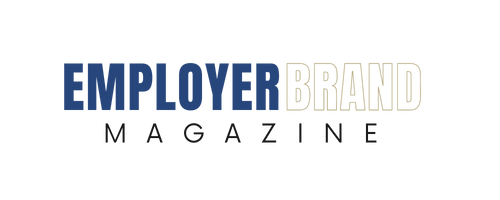Are You Doing the “Right Stuff” to Build Candidate Engagement?
“As talent acquisition professionals, we need to push ourselves to do a better job of engaging talent and distinguishing our employment brands. We’ve got to be willing to step it up and do things differently—do things better than we have in the past.”
This was one of the key takeaways from Janine Woodworth, Director of Strategic Services at Jobvite, who was featured in the latest installment of Talent Board’s webinar series, “Dog Days of Summer with the CandEs.”
Woodworth’s presentation, Talent Engagement: Stop Doing The Wrong Stuff & Start Doing the Right Stuff, highlighted the difference between “candidate engagement” and “candidate experience” and their importance in building an employment brand. Candidate engagement, she noted, is what a company actually does to engage candidates throughout the candidate journey. Candidate experience, on the other hand, is how candidates feel after interacting with an employment brand. Both require continual improvement to build a vibrant employment brand.
Woodworth cited several of the biggest missteps employers make in delivering a powerful and positive candidate experience, including:
- A lack of compelling content on career sites.—Career sites are often just a list of jobs, Woodworth said. There’s no content that helps candidates understand why they would want to work at the company. Employers should be creating more content that helps their companies stand out as great places to work.
- A lengthy apply process.—The application process should be five minutes or less, according to Woodworth. That means you should be gathering only the most vital information you need to conduct your initial assessment of applicants. While some people might tolerate a laborious application process, nobody enjoys jumping through needless hoops. You can make a great first impression and differentiate your employment brand by keeping your process streamlined.
- Pitiful response times and poor communication.—Woodworth stressed the need for recruiters to reach out to candidates soon after they apply—and to keep in touch with candidates throughout the entire application, screening and dispositioning process. Lousy response times and communication “black holes” create anxiety in candidates and a poor reputation for your employment brand. Even when we’re rejecting candidates it’s critical that we communicate with them in an honest and timely way, Woodworth stated. Letting candidates know where they stand—even when the news isn’t good—is an important part of building a positive brand image.
Other important problems that Woodworth discussed included inconsistent follow up, an overdependence on technology by talent professionals, and candidate experiences that feel more “transactional” than personal.
“A great employment brand is all about building genuine relationships with candidates and providing the human touch they desperately want,” said Woodworth. “Give candidates full transparency and visibility into your talent acquisition process. Tell them what to expect, when to expect it, and why. Doing so will reduce their anxiety and allow their talent and personality to really shine through. And it will help to differentiate your employment brand.”
Leverage Talent Technology with Caution!
Another key takeaway Woodworth shared with listeners was the need to guard against becoming overly dependent on talent-related technologies.
Technology is perfect for streamlining processes and improving performance, she said, but “we need to step away from technology when it makes sense to have an actual touch point with candidates—picking up the phone and having a personal conversation, for example, or conducting a quick text chat. We can’t overlook the power and importance of personally interacting with candidates.”
8 Ways To Build Continuous Candidate Engagement
Woodworth then offered participants the following eight strategies for building continuous candidate engagement:
- Think “first look to first day”—Every touch point in your candidate journey offers an opportunity for better engagement and more interaction between your recruiters and candidates. These touch points include the first moment someone encounters your employment brand; when you’re nurturing relationships in your talent pool; when people apply for your jobs; during the screening and interviewing processes; when job offers are made; and during the hiring and onboarding process.
- Take a holistic approach—Examine your talent function from a holistic perspective. Are you using your people, processes and technology in optimal ways? Are they all aligned to deliver specific results? Who’s doing what and is it all necessary? Who owns the various processes and outcomes? Asking these kinds of questions helps you identify where improvements can and should be made.
- Know what story your data tells—Your ATS and other talent technologies should be providing you with hard data regarding engagement. For instance, how long does it take your team to contact a candidate once an application has been submitted? Is it an acceptable timeframe? Also, you should be surveying candidates about their experiences. If you’re not, you’re missing an incredible opportunity to fix engagement disconnects.
- Build internal partnerships—To make meaningful improvements to your candidate experience, you need to build partnerships between recruiters, hiring managers and your company’s leadership—especially among teammates who are truly passionate about finding great talent.
- Remember, it’s all about people—Create an environment where your recruiters can genuinely engage with candidates—where they’re free to meet with candidates face-to-face on their turf, when possible.
- Shift your culture—If your culture is tactical rather than strategic (you focus on filling jobs rather than building candidate relationships), you can boost engagement by gradually shifting your focus. Make it a priority to give candidates a white-glove experience; this will necessitate more relationship-building activities.
- Align your employment brand with reality—Identify what your employment brand stands for, why people come to work for your company, and why they stay. This will help you create a stronger employment brand in the marketplace and attract the right talent in the future.
- Invest the time, commitment and energy that change requires—Building continuous engagement and creating a candidate journey that is filled with personal touch points takes time and effort. Don’t expect immediate results. Aim for incremental and ongoing progress.
Woodworth closed her presentation by sharing 10 questions you should ask to determine whether you’re focused on the “right stuff” for building candidate engagement. Check them out for yourself here.
–Kevin W. Grossman, President, Talent Board


